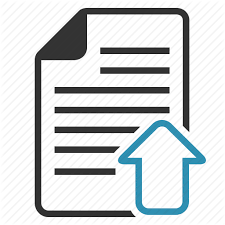DISTRIBUTION NETWORK MODEL OF CLEAN WATER IN PONDOK CINA SUBDISTRICT, BEJI DISTRICT, DEPOK CITY USING EPANET 2.0 SOFTWARE
Abstract views: 690 | pdf downloads: 3033
Abstract
Clean water is water that can be used for daily needs, where the quality must meet health requirements. The clean water distribution network is a water distribution network whose existence is functioned to fulfill the community's water needs in a city or as groundwater conservation. The simulation model for the clean water distribution network in Pondok Cina Subdistrict, Beji District, Depok City, West Java aims to obtain a simulation of the need for clean water in the next 20 years. This modeling is done with the help of epanet 2.0 software with population projection methods, namely arithmetic, geometric, and least square methods. The next stage is to predict the need for clean water by referring to the standards set by the West Java PPSAB and the Directorate General of Human Settlements of the Ministry of Public Works and Housing, and SNI 03-1733-2004 on procedures for planning housing environments in urban areas in the technical guidelines for technical design procedures in the drinking water sector, as well as SNI 7509: 2011 concerning procedures for engineering planning of distribution networks and service units for the drinking water supply system. The results of the modeling of clean water distribution networks using the projection method accepted by the geometric method, where the prediction of the population in 2039 is 14,924 people, so it takes an average daily water of 24,53 liters / second, maximum water 26, 98 liters / second, and peak water 36,80 liters / second. The hydraulic simulation results obtained a reservoir capacity of 360 m3, type of HDPE pipe with a diameter of 5 inch primary distribution pipe, 0,5 inch secondary pipe, and 8,20 meter pump head.
References
Badan Standar Nasional. SNI 03-7065-2005 Tata Cara Perencanaan Sistem Plumbing. Jakarta
Badan Standar Nasional SNI 7831:2012 Perencanaan Sistem Penyediaan Air Minum. Jakarta
Badan Pusat Statistik Kota Depok 2019. Kota Depok Dalam Angka. Depok
Badan Pusat Statistik Kecamatan Beji 2019. Kecamatan Beji Dalam Angka, Beji
Nelwan, F., Wuisan, E. M., dan Tanudjaja, L. (2013). Perencanaan Jaringan Air Bersih Desa Kima Bajo Kecamatan Wori. Jurnal Sipil Statik, No 10, Vol 1.
Peraturan Meneteri Kesehatan. (1990). Syarat-syarat dan Pengawasan Kualitas Air. Meneteri Kesehatan Republik Indonesia. Jakarta
Peraturan Menteri PU. (2007). PERMEN No. 18 Tahun 2007 Tentang Penyelenggaraan Pengembangan Sistem Penyediaan Air Minum. Menteri Pekerjaan Umum. Jakarta.
Peraturan Menteri PU. (2010). PERMEN PU No. 14 Tahun 2010 Tentang Standar Pelayanan Minimum Bidang Pekerjaan Umum dan Penataan Ruang. Menteri Pekerjaan Umum. Jakarta.
Rachman, M., Ranno, Sundi Triyantini, Sukarman S., Ahmad. (2020). Analisis Kebutuhan Jaringan Distribusi Air Bersih di Desa Laroonaha Menggunakan Software Epanet 2.0. Jurnal Universitas Halu Oleo Vol.6, No.1, Jan-Jun 2020.
Ramadhan, A. (2014). Analisis Hidrolik Sistem Jaringan Distribusi Air Minum di Komplek Perumahan P.T. PUSRI Palembang Menggunakan Epanet 2.0. Jurnal Teknik Sipil dan Lingkungan, Vol.2 No.2 Juni 2014.
Rossman, Lewis, A. (2000). Epanet 2 Users Manual (Versi Bahasa Indonesia). Ekamitra Engineering. Cincinnati.
Sahbar, R. (2017). Analisis Kebutuhan Air Bersih (Pdam) Kabupaten Rejang Lebong Provinsi Bengkulu Untuk 10 Tahun Ke Depan. TEKNIKA: Jurnal Teknik, No. 1, Vol. 1, hal 40 – 49.
Selintung, M., Hatta, M., P., Sudirman. (2012). Analisa Pipa Jaringan Distribusi Air Bersih Di Kabupaten Maros Dengan Menggunakan Software Epanet 2.0. Jurnal Tugas Akhir, No 1, Vol 1.
Copyright (c) 2021 Jurnal Infrastruktur

This work is licensed under a Creative Commons Attribution-NonCommercial-ShareAlike 4.0 International License.














